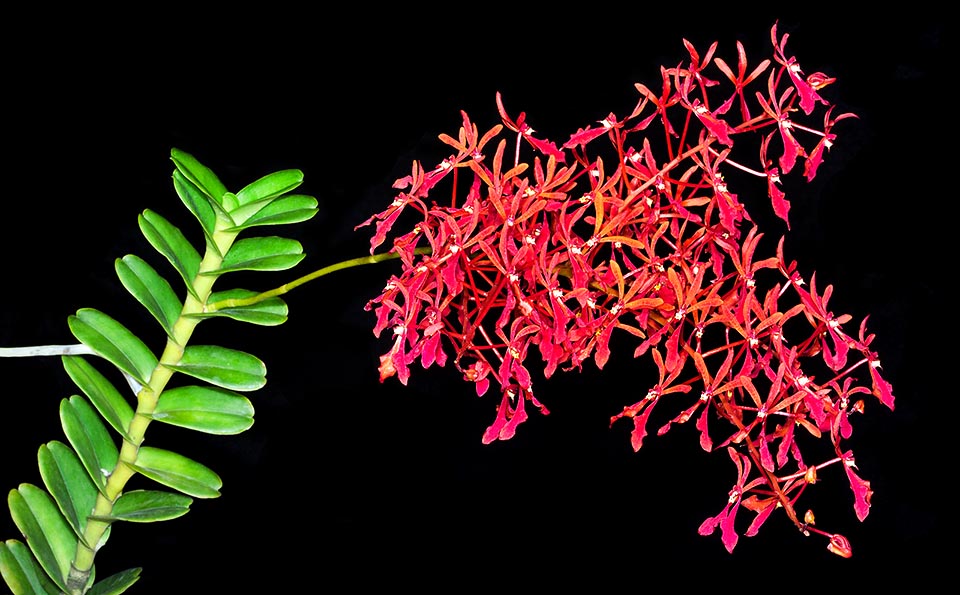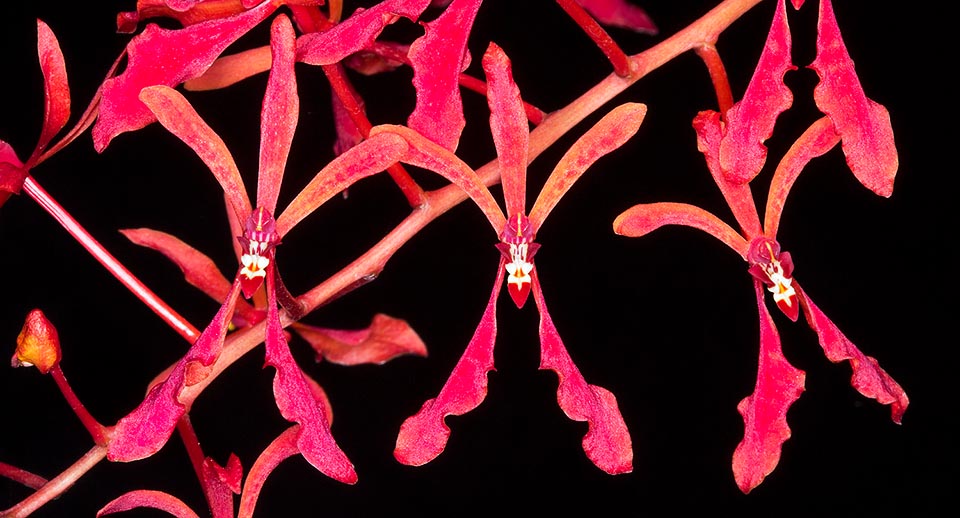Family : Orchidaceae

Text © Pietro Puccio

English translation by Mario Beltramini

The Renanthera philippinensis is an epiphyte species native to the Philippines where it grows in humid forests or in swampy areas at low altitudes. Erect or semi-drooping stems that can exceed the metre and a half with very showy panicle 60-80 cm inflorescences, opposite to the leaves, tending to arrange horizontally © Giuseppe Mazza
The name of the genus is the combination of the Greek substantives “ῥήν” (ren) = kidney and “ανθηρά” (anthera) = anther, with reference to the reniform lobes of the anthers; the specific name is the Latin adjective “philippinensis” = of the Philippines, with reference to the origin place.
Common names: fire orchid (English).
The Renanthera philippinensis (Ames & Quisumb.) L.O.Williams (1937) is a monopodial epiphytic species with erect or semi-drooping stems, up to more than 1,5 m long, and alternate leaves, distichous, coriaceous, oblong with bilobed apex, 10-16 cm long and 3,5-4,5 cm broad. Panicle inflorescences opposite to the leaves that tend to arrange themselves horizontally, 60-80 cm long, with a multitude of flowers of 2,5-4 cm of diameter with bright red sepals and petals, with yellow spot ath the base of the labellum and lateral lobes of the labellum of cream colour.
It reproduces by seed, in vitro, and micropropagation. At amateurish level, it may be reproduced by division of the stem with both portions provided of a sufficient number of leaves and roots, the lower part will produce one or more plants with dormant buds that may be removed as soon as they will form their own rooting apparatus.

The countless flowers, of 2,5-4 cm of diameter, have bright red sepals and petals, with yellow spot at the base of the labellum with cream lateral lobes © Giuseppe Mazza
The species is shown in the appendix II of CITES (species whose trade is internationally ruled).
Synonyms: Renanthera storiei var. philippinensis Ames & Quisumb. (1932).
→ For general notions about ORCHIDACEAE please click here.
